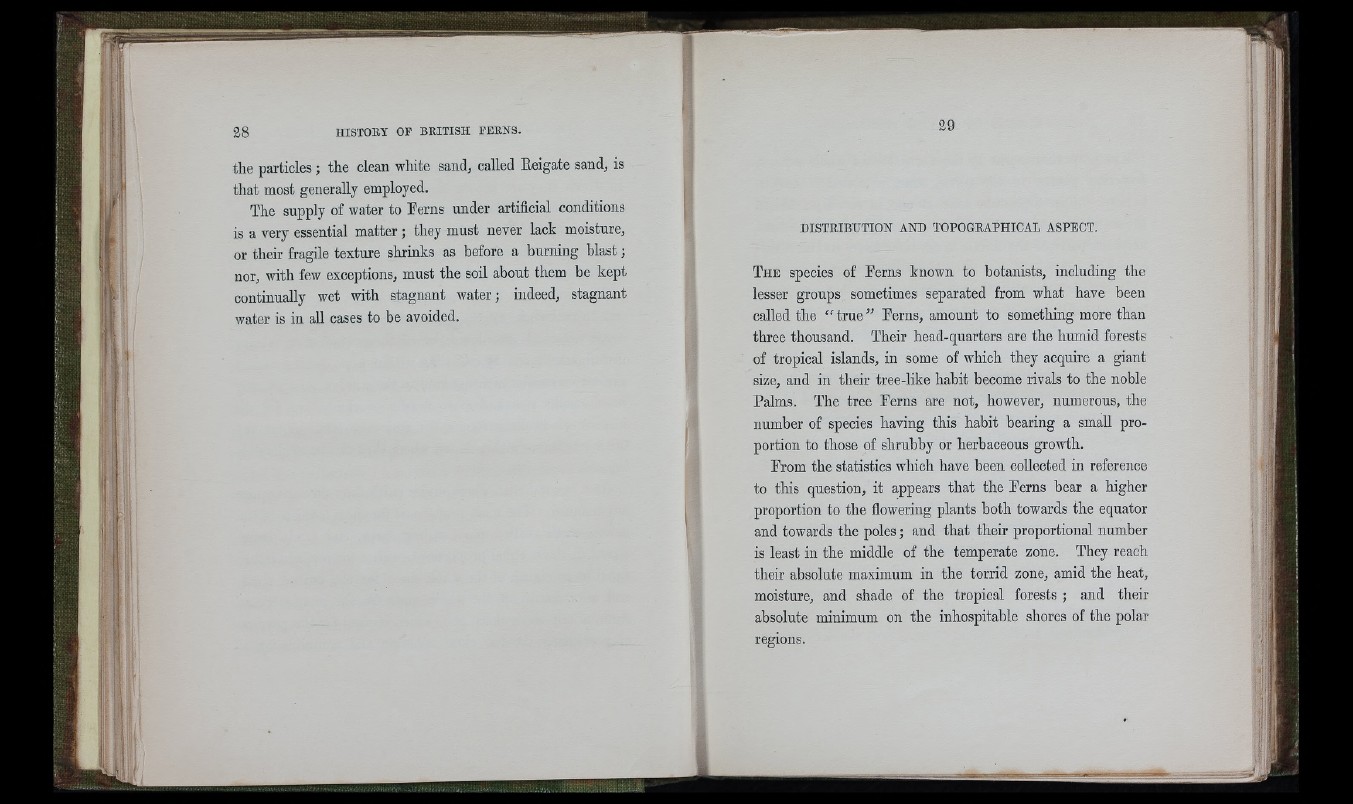
the particles; the clean white sand, called Eeigate sand, is
that most generally employed.
The supply of water to Eerns under artificial conditions
is a very essential matter; they must never lack moisture,
or their fragile texture shrinks as before a burning blast;
nor, with few exceptions, must the soil about them be kept
continually wet with stagnant water; indeed, stagnant
water is in all cases to be avoided.
DISTRIBUTION AND TOPOGRAPHICAL ASPECT.
T h e species of Eerns known to botanists, including the
lesser groups sometimes separated from what have been
called the “ true ” Eerns, amount to something more than
three thousand. Their head-quarters are the humid forests
of tropical islands, in some of which they acquire a giant
size, and in their tree-like habit become rivals to the noble
Palms. The tree Eerns are not, however, numerous, the
number of species having this habit bearing a small proportion
to those of shrubby or herbaceous growth.
Erom the statistics which have been collected in reference
to this question, it appears that the Eerns bear a higher
proportion to the flowering plants both towards the equator
and towards the poles; and that their proportional number
is least in the middle of the temperate zone. They reach
their absolute maximum in the torrid zone, amid the heat,
moisture, and shade of the tropical forests; and their
absolute minimum on the inhospitable shores of the polar
regions.